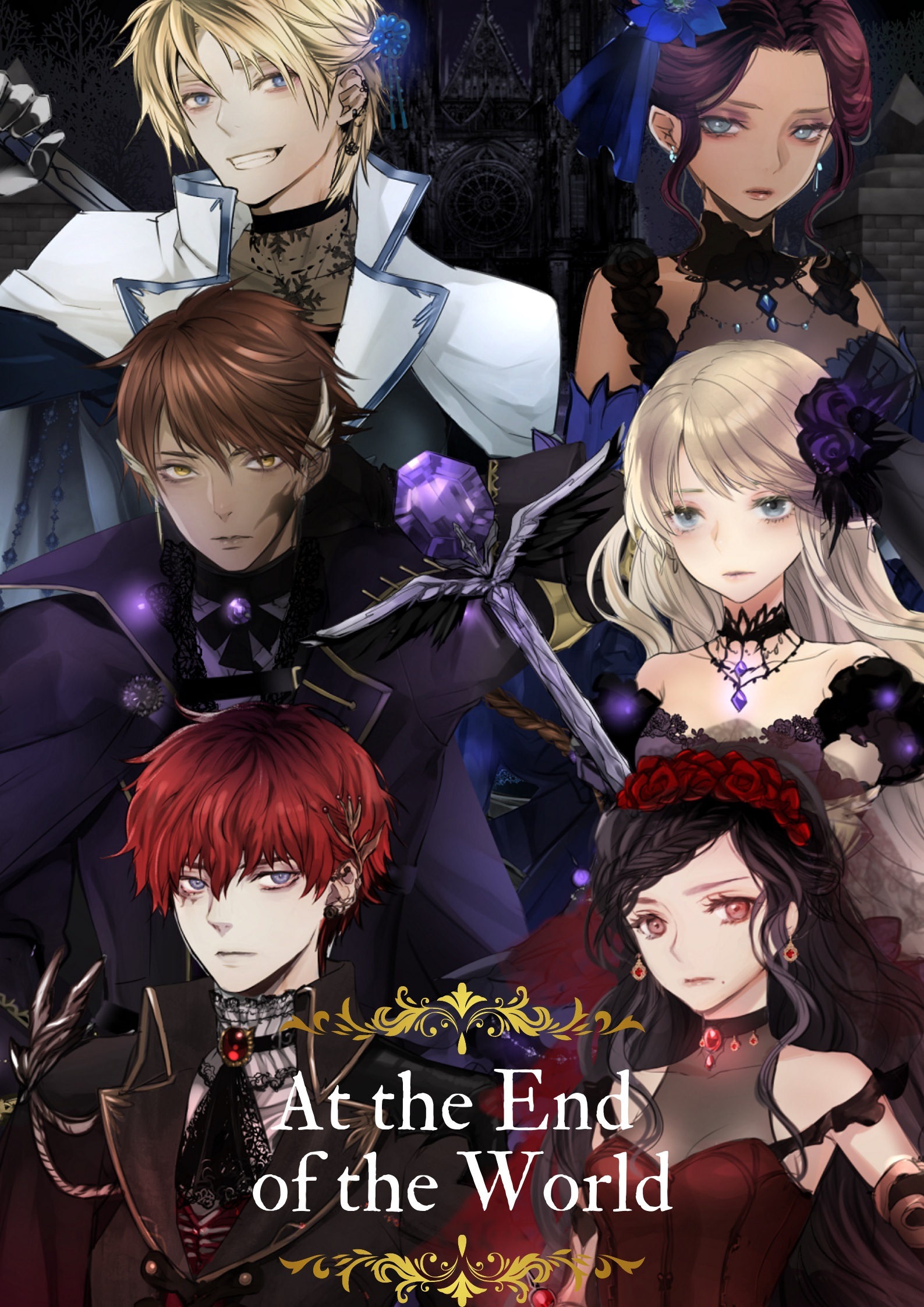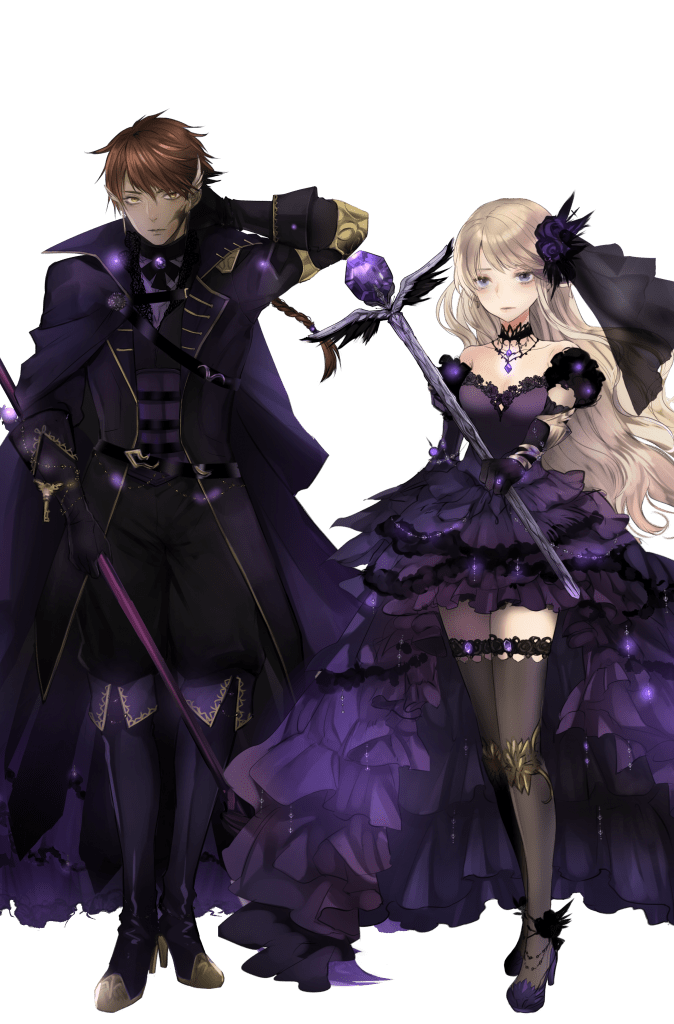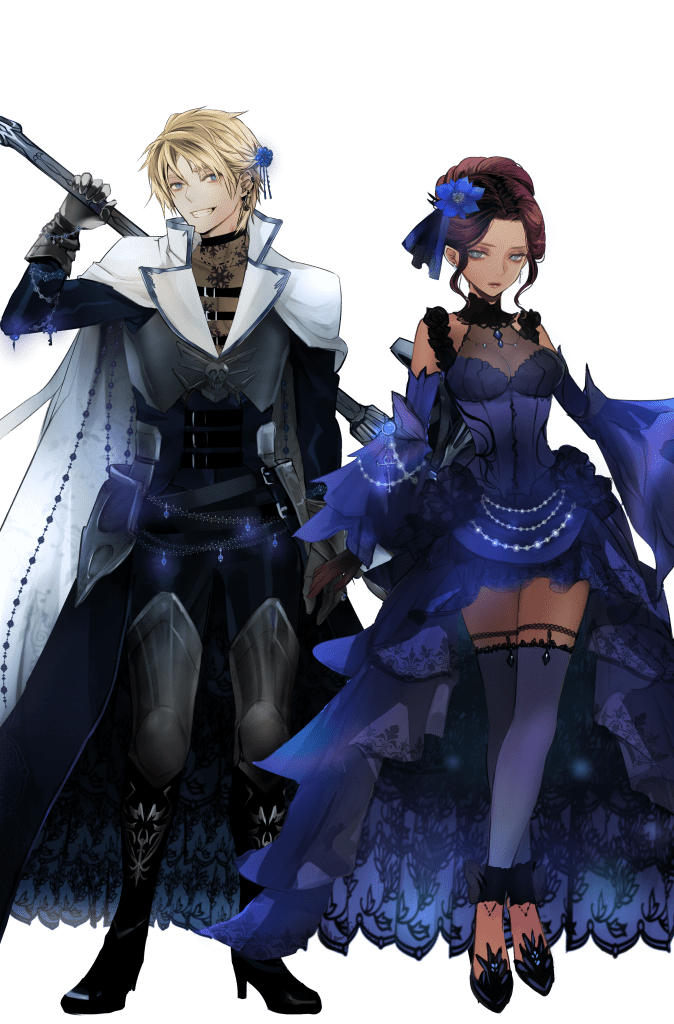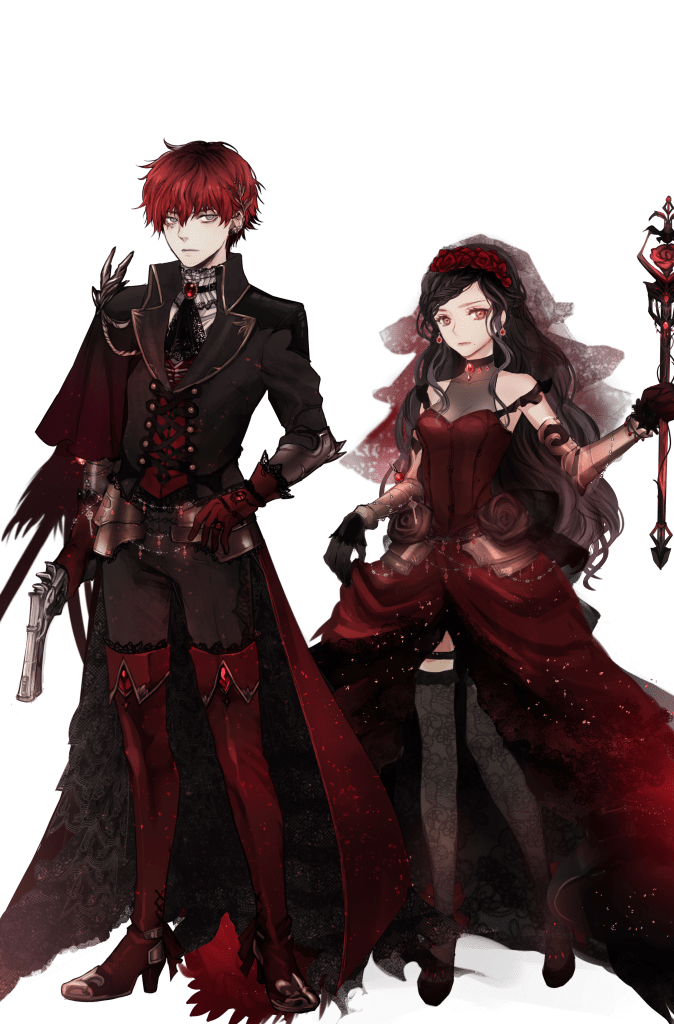Creator Spotlight: Crisyah, Author of the Webnovel “At the End of the World”

For this creator spotlight, I interviewed Crisyah, the author of the webnovel At the End of the World, about her work and how she tackles worldbuilding.
Update (10/11/21): The webnovel, originally titled At the End of the World, has been changed to A Lament of Gods and Monsters.
I’m still new to the world of webnovels (or Internet novels, or web serials), but I’ve been intrigued by what I’ve seen so far. Crisyah’s ongoing webnovel, At the End of the World, is definitely one that I’d recommend. The worldbuilding, action, and character dynamics impress me. It unravels a philosophical and complex story about unattainable desires.
Summary: In the disastrous aftermath of trying to achieve Godhood, human survivors shelter themselves in a walled city. Monsters of terrifying imagination roam the outside. Warrior mages known as Scions fight these beasts and can travel between Heaven and Hell. The Scions, kept locked in abbeys the rest of their time, are planning a rebellion to reclaim their freedom and achieve an impossible destiny.
I had the pleasure of speaking with Crisyah about her creative process and how she approaches worldbuilding in her work.
The Geekiary: Thank you for taking the time to be here. So excited! Let’s start by introducing yourself and your work!
Crisyah: Thank you so much for having me! I’m very excited to get into it! So, I’m Cris, a Portuguese, queer, neurodivergent webnovel author who loves cats and BTS. My current work, At the End of the World, is a gothic fantasy about six warrior-mages fighting to gain back their freedom and unveil the mysteries surrounding their world and the one bleeding into it. The worldbuilding, characters, and plot are all built around the idea of trauma, how it shapes people and how it can make it seem as if you’re growing up slower than everyone else around you, how you’re being left behind seeing younger people achieving “higher” goals, while you’re stuck in the same place.
The whole thing was born out of a deep desire to see better representation for neurodivergent people stuck in that grey age between teenagehood and adulthood, in speculative fiction, specifically. There’s still not enough neurodivergent representation on anything, for my tastes, but this is a specific area that speaks to me, as it’s something I still seek, yet can’t find.
In fantasy, we go from teenagers having adventures in magical worlds to 40-something year old veterans fighting to save their children. There’s no in between. New Adult is still an underdog genre, despite the fact that that’s such an important moment in people’s lives, where they’re forced to make life-changing decisions and enter the world of adulthood with little to no guidance.
It’s especially difficult for neurodivergent and queer people, who may have to take longer to figure themselves and their identities out, and for whom this period stretches out for longer. Doing this without the comfort stories can offer is a lonely thing, indeed.
So, with this project, I wanted to provide this set of people, these people who have gone or are going through experiences so similar to mine, that exact comfort. I wanted to give them a dark, quiet, cold place where they can face their fears and the bleaker parts of the world and themselves knowing that they’re safe and that they will triumph, in the end.

TG: Your worldbuilding for At the End of the World impresses me with its philosophical angles and detailed magic system. As a genre writer myself, it’s a challenge to construct a secondary world with its own rules, lore, and dynamics. How do you approach worldbuilding? Do you have a method or do you just write and see what sticks?
Crisyah: I’m really glad that comes through, as worldbuilding is at the core of everything I have ever created. With webnovels, especially, where you can’t go back to the beginning of the book after you’re writing it and redo parts of your setting, good, solid worldbuilding becomes essential so you won’t write yourself into a corner 300 chapters down the line. Luckily for me, it was something I already enjoyed and did extensively.
I don’t follow a strict method. Usually, worldbuilders fall into one of two groups: people who build “upwards” from small, everyday details down to cosmology and cosmogony, and people who build “downwards” from world creation down to what happens in the specific place the characters and time are in. (Sidenote: I imagine some people are just chaotic gremlins who build whatever they want, when they feel like, and I salute you if that’s your approach.)
I fall more into the second type, but I don’t waste time or effort building things that are unnecessary and won’t feature much in the story. For those, I usually build a sketch of something that gives the illusion of depth, without me needing to get bogged down by. I focus only on the aspects that matter and, for At the End of the World, that was exactly the magic, the religion and creatures associated with it, the dying state of the world, and how these things shape the current society.

I also tend to sacrifice realism for mood and atmosphere, as well as symbolism and themes. For example, it’s not as important for me to know how the walls of the city were erected to keep the demons out; whether countless were killed during their construction and what kind of strategies they used to keep themselves remotely safe against the onslaught while they finished their defenses. What’s important is that the characters are locked in this suffocating home that was supposed to protect them, that what was meant to mean safety has become a prison.
As for the themes I wanted to touch upon, there was mental illness, repressed sexuality, and feminism, and I wanted a dark ambiance setting, so it made sense to create a gothic world.
But, maybe what’s most important to me is symbolism. I take a lot from mythology, folklore and gothic literature and there are a lot of little hints and allusions throughout the whole work that could fill up an entire thesis. The Brides are three in number to represent the triple goddess, and a specific trinity of goddesses on whom their Archons are based (spoiler territory, ssshhhh), but also because there were three brides of Dracula. While you’re reading the series, if you think that something is a reference to something else, it most likely is.
This is also somehow related to what you mentioned as the worldbuilding having philosophical angles, but a lot of it is based on Jungian psychology. The idea of the collective unconscious, synchronicity, the trinity of Persona, Ego and Shadow and archetypes are all present, in a world where humanity’s thoughts and feelings can help shape reality. It’s a half platonic world of ideas, half Alice’s Wonderland gone wrong, half psychological landscape described in the Red Book, but belonging to a God, not a human. And the fact that it’s three halves makes sense, again, because this is magic and symbolism, not true mathematics.

Lastly, I strive for originality. While it’s easier to pull creatures from already existing mythologies (and some very cool are criminally underused), I rather built my own, as well as their own original environments. The names for the individual volumes are all taken from areas in the Otherworld; the first volume is called At the Fields of Fire and Blood. I’m so looking forward to showing all the critters and monsters I created to inhabit this nightmare world!
So, it’s not a linear method; it’s more akin to cooking. I throw some things into my cauldron, stir, let it cook. Then, I taste, see that it’s lacking a little bit of symbolism, or something to balance these magic laws, and I add that in. I repeat the process until I’m satisfied with the result.
TG: What is your creative process?
Crisyah: Like I said, I always start with a world and I perfect that to a perhaps unneeded level before I start working on anything else. The characters usually surface during the worldbuilding process, as their conflicts and personalities reflect and are part of the world they live in. Curiously, I cannot get their mannerisms and personality down fully until I know what they’re wearing, of all things.
The story, beyond the initial premise, is always the last to emerge. I have to allow the characters to run around in the world, tell me what they want to do, and explore and see how they react to things to be able to know where I’ll be going next.
I used to be a heavy outliner in the past, unable to put a single word down unless I knew exactly where each scene was going to start and end. Now, I’m a bit more lenient. I have a structure down for the series: 12 volumes, 30 names chapters each, further divided into 4 parts. (Again, it’s symbolism: 12 months, 30 days, 4 parts (day, dusk, dark and dawn) which x 6 characters, make up 24 hours.) I have general beats and things that I know I want to have happened and others that I know have to happen. I know the answers to the mysteries I have and will plant. I know how the story will end. But the journey, the path to getting there, and how the characters will unveil everything are still very much open.
I think the reason why I gave up on other projects before was exactly from already knowing everything; my brain then didn’t want to write because it was already aware of the destination and what happened on the road. With this mixed approach, I’ve been getting so much more joy out of creating, because it satisfies both my need for control and my senses of wonder and curiosity.
TG: What are your favorite media (books, TV shows, films, etc.)? Anything that inspired At the End of the World?
Crisyah: Definitely, yes! I usually pitch the series as “Soulsborne meets Madoka Magica,” which is an unusual mix, to say the least. But I was raised with Sailor Moon and there is no stopping my love for magical girl tropes. The transformation scenes, the outfits, the powers, the wands and weapons and magical objects — all of that filled my childhood with wonder and an empowering feeling of being a woman. Everything I write will most likely always have some element of the genre and I accept no criticism on that, thank you very much.
As for the inspiration I got from, FromSoftware’s video games (Demon Souls, Dark Souls and Bloodborne, specifically), that has more to do with the genre, as well as the lore and mystery surrounding the world and the narrative. These games present only a basic storyline for the player, yet if one is to dig deeper, they will find a treasure cove of information about the world, the characters and the story. Nothing is spoonfed to the player. Instead, it’s gained through exploration and theory crafting and confirming it against item descriptions.
Obviously, it’s hard to emulate this experience with a novel, but I want to give it a try. To do this, I’ll be posting a series of articles about the world and the characters, book excerpts and letters that they have access to, so that the reader may make the discoveries with them, rather than sit passively and be told what the characters have just uncovered. A half-epistolary experience that, again, calls out to the roots of Gothic Horror.
Lastly, there’s a duology that has inspired me greatly, not only for this project, but in my writing journey in general: Vellum and Ink by Hal Duncan. I read the books at a very hard time for me, when I was going through the loss of my grandfather, and it was unbelievable to me how someone could just get how I felt so completely. It made me want to achieve that, to be able to put my work on the page so perfectly that anyone reading would be able to say “She knows what she’s talking about.”
TG: Besides At the End of the World, are you working or planning on anything else?
Crisyah: For now, I’m focusing on At the End of the World only. The series will be long running, as so many webnovels are, and will take me a couple of years to finish. Whether I need a palate cleanser halfway through or if I get it all out of my system before starting work on my next series, I still don’t know.
But I do have an idea of what I’d like to work on next. It will most likely be a mecha series about a world where people pilot the corpses of dead gods to fight off hordes of undead rising due to the closing of the gates of the underworld, after a war between mortals and immortals. I’ve always loved mecha anime, I’m a huge Evangelion fan, and it’s definitely something I would like to try my hand at writing!
At the End of the World is available to read on Tapas.
Learn more about Crisyah here.
Media that Crisyah Recommends:
Mahou Shoujo Madoka Magica (Anime TV series + Rebellion movie)
Ink by Hal Duncan (Book)
Vellum by Hal Duncan (Book)
Demon’s Souls (Videogame)
Dark Souls 3 (Videogame)
Bloodborne (Videogame)
Prometheus Reanimated by Sarah Massey (Webnovel)
Earthwitch by Milo Nelakho (Webnovel)
Of Bones and Blooms by Blackorchid (Webnovel)
Author: Bradda M.
Bradda M. currently lives in Virginia. He teaches ESOL (English to Speakers of Other Languages) at a public school and spends his free time reading and watching movies each night with his partner. For The Geekiary, he writes about webcomics and SFF media.
Help support independent journalism. Subscribe to our Patreon.
Copyright © The Geekiary
Do not copy our content in whole to other websites. If you are reading this anywhere besides TheGeekiary.com, it has been stolen.Read our
